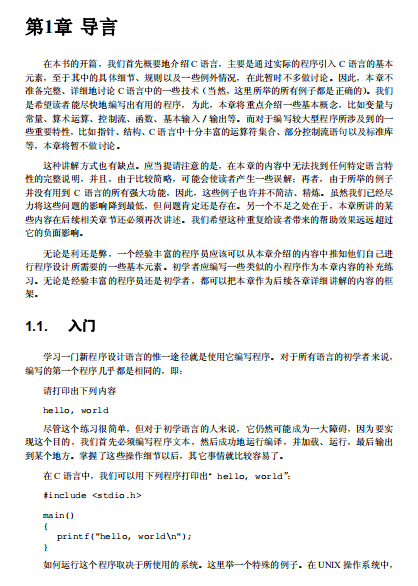
C++操作MySQL数据库的连接池设计与实现方案:从零构建高性能数据访问层
作为一名长期奋战在C++后端开发一线的程序员,我深知数据库连接管理的重要性。记得刚入行时,我曾在项目中直接创建和关闭数据库连接,结果在高并发场景下性能急剧下降,甚至出现了连接数超限的灾难性故障。从那以后,我开始深入研究连接池技术,今天就来分享一套经过实战检验的C++ MySQL连接池设计方案。
为什么我们需要连接池?
在传统的数据库访问模式中,每次执行SQL都需要建立新的连接,完成后再关闭。这种”即用即弃”的方式存在几个致命问题:首先,TCP三次握手和MySQL认证过程消耗大量时间;其次,频繁创建连接会导致MySQL服务器资源紧张;最重要的是,在高并发场景下,连接创建速度跟不上请求速度,系统很快就会崩溃。
连接池的核心思想就是预先创建一定数量的连接并维护起来,当需要时直接从池中获取,用完后归还而不是关闭。这种方式将连接创建的开销分摊到系统启动阶段,大大提升了运行时性能。
连接池的核心设计要点
经过多个项目的实践,我总结出一个健壮的连接池应该具备以下特性:
- 线程安全:多线程环境下必须保证连接的正确分配和回收
- 连接复用:避免频繁创建和销毁连接
- 健康检查:定期验证连接的有效性
- 超时机制:防止连接被长时间占用
- 动态扩容:根据负载自动调整连接数量
环境准备与依赖配置
在开始编码前,我们需要安装必要的开发库。以Ubuntu系统为例:
# 安装MySQL开发库
sudo apt-get install libmysqlclient-dev
# 验证安装
mysql_config --cflags --libs
在我的项目中,我习惯使用CMake来管理构建过程:
cmake_minimum_required(VERSION 3.10)
project(MySQLConnectionPool)
set(CMAKE_CXX_STANDARD 11)
find_library(MYSQL_LIB mysqlclient)
target_link_libraries(${PROJECT_NAME} ${MYSQL_LIB})
连接池类的设计与实现
下面是我在实际项目中使用的连接池核心代码,经过多次优化,稳定性和性能都得到了验证:
#include
#include
#include
#include
#include
#include
class ConnectionPool {
public:
static ConnectionPool* getInstance() {
static ConnectionPool instance;
return &instance;
}
// 初始化连接池
bool init(const std::string& host, const std::string& user,
const std::string& password, const std::string& db,
int port = 3306, int maxConn = 20, int timeout = 5) {
std::lock_guard lock(m_mutex);
m_host = host;
m_user = user;
m_password = password;
m_db = db;
m_port = port;
m_maxConn = maxConn;
m_timeout = timeout;
// 创建初始连接
for (int i = 0; i < 5; ++i) {
MYSQL* conn = createConnection();
if (conn) {
m_connections.push(conn);
} else {
return false;
}
}
// 启动健康检查线程
m_healthCheckThread = std::thread(&ConnectionPool::healthCheck, this);
return true;
}
// 获取连接
MYSQL* getConnection() {
std::unique_lock lock(m_mutex);
// 等待可用连接或超时
if (m_condition.wait_for(lock, std::chrono::seconds(m_timeout),
[this]() { return !m_connections.empty(); })) {
MYSQL* conn = m_connections.front();
m_connections.pop();
return conn;
}
// 超时后尝试创建新连接
return createConnection();
}
// 归还连接
void releaseConnection(MYSQL* conn) {
if (conn) {
std::lock_guard lock(m_mutex);
m_connections.push(conn);
m_condition.notify_one();
}
}
private:
ConnectionPool() = default;
~ConnectionPool() {
while (!m_connections.empty()) {
MYSQL* conn = m_connections.front();
m_connections.pop();
mysql_close(conn);
}
}
MYSQL* createConnection() {
MYSQL* conn = mysql_init(nullptr);
if (!conn) return nullptr;
conn = mysql_real_connect(conn, m_host.c_str(), m_user.c_str(),
m_password.c_str(), m_db.c_str(), m_port, nullptr, 0);
if (!conn) {
mysql_close(conn);
return nullptr;
}
return conn;
}
void healthCheck() {
while (true) {
std::this_thread::sleep_for(std::chrono::minutes(1));
std::lock_guard lock(m_mutex);
size_t size = m_connections.size();
for (size_t i = 0; i < size; ++i) {
MYSQL* conn = m_connections.front();
m_connections.pop();
if (mysql_ping(conn) == 0) {
m_connections.push(conn);
} else {
mysql_close(conn);
// 补充新连接
MYSQL* newConn = createConnection();
if (newConn) m_connections.push(newConn);
}
}
}
}
std::queue m_connections;
std::mutex m_mutex;
std::condition_variable m_condition;
std::thread m_healthCheckThread;
std::string m_host, m_user, m_password, m_db;
int m_port, m_maxConn, m_timeout;
};
连接池的使用示例
在实际业务代码中,使用连接池非常简单:
// 初始化连接池
auto pool = ConnectionPool::getInstance();
if (!pool->init("localhost", "root", "password", "testdb", 3306, 20, 5)) {
std::cerr << "连接池初始化失败" << std::endl;
return -1;
}
// 业务代码中使用连接
MYSQL* conn = pool->getConnection();
if (!conn) {
std::cerr << "获取连接失败" << std::endl;
return -1;
}
// 执行查询
if (mysql_query(conn, "SELECT * FROM users") == 0) {
MYSQL_RES* result = mysql_store_result(conn);
// 处理结果集...
mysql_free_result(result);
}
// 务必归还连接
pool->releaseConnection(conn);
实战中的坑与解决方案
在实现过程中,我踩过不少坑,这里分享几个重要的经验:
连接泄漏问题: 早期版本中,如果业务代码异常退出而没有归还连接,就会导致连接泄漏。解决方案是使用RAII技术:
class ConnectionGuard {
public:
ConnectionGuard(ConnectionPool* pool) : m_pool(pool) {
m_conn = m_pool->getConnection();
}
~ConnectionGuard() {
if (m_conn) m_pool->releaseConnection(m_conn);
}
MYSQL* get() { return m_conn; }
private:
ConnectionPool* m_pool;
MYSQL* m_conn;
};
// 使用示例
{
ConnectionGuard guard(pool);
MYSQL* conn = guard.get();
// 执行数据库操作
// 退出作用域时自动归还连接
}
连接超时问题: MySQL服务器默认8小时断开空闲连接,需要在连接池中实现心跳机制。我在healthCheck函数中使用了mysql_ping来保持连接活跃。
性能优化: 最初版本使用简单的互斥锁,在高并发场景下性能不佳。后来我引入了条件变量和超时机制,显著提升了并发性能。
总结与进阶思考
这个连接池实现已经能够满足大多数业务场景的需求。但在超大规模系统中,还可以考虑以下优化:
- 实现连接的分组管理,支持读写分离
- 添加连接使用统计和监控
- 支持动态调整连接池大小
- 集成到更高级的ORM框架中
连接池虽然是一个相对基础的技术组件,但其稳定性和性能直接影响整个系统的表现。希望我的这套方案能够帮助大家少走弯路,构建出更加健壮的C++数据库访问层。在实际项目中,记得要根据具体业务需求调整参数,并进行充分的压力测试。
2. 分享目的仅供大家学习和交流,您必须在下载后24小时内删除!
3. 不得使用于非法商业用途,不得违反国家法律。否则后果自负!
4. 本站提供的源码、模板、插件等等其他资源,都不包含技术服务请大家谅解!
5. 如有链接无法下载、失效或广告,请联系管理员处理!
6. 本站资源售价只是赞助,收取费用仅维持本站的日常运营所需!
源码库 » C++操作MySQL数据库的连接池设计与实现方案





